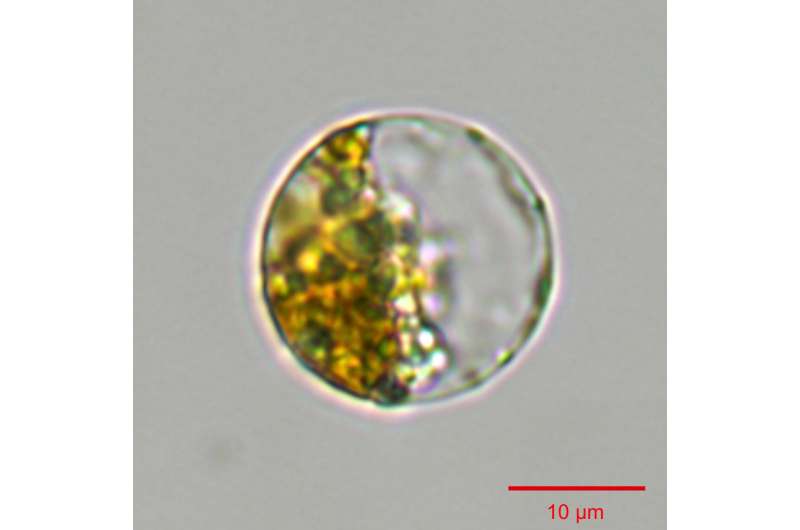Scientists find secret to cell size in world's biggest food producer

A gene controlling cell size has been identified in a microalgal group which underpins a fifth of the world's food chains.
Scientists at The University of East Anglia (UEA) have discovered a gene which regulates the size of diatoms, which contribute 20 per cent of global primary production in food chains. The discovery could have implications for understanding the potential effects of climate change on future food webs.
Knowledge of the genes which dictate the size of diatom cells has been limited until now. But through a combination of reverse genetics, experimental evolution and RNA-sequencing, the team identified a previously-unknown genetic control of cell size in the marine diatom Thalassiosira pseudonana.
Prof Thomas Mock, in UEA's School of Environmental Sciences, said: "There is variation in cell size across different species of diatoms, as well as observed variation within species due to either environmental conditions or reproduction. However, we have only now begun to uncover the genetic control of cell size – important for understanding the key role diatoms play in food webs and how this might change in the future."
Cell size influences many aspects of the physiology and ecology of organisms like algae, from affecting the cell surface area and therefore the ability to take up nutrients, to larger cells sinking faster and exporting more carbon into the deeper ocean than smaller diatoms.
The team looked at one of the most characteristic features of diatoms – the silica shell called a frustule. Diatom fossil records show that frustules have persisted through more than 185 million years of evolution and the team therefore assumed they perform important roles in the evolutionary success of diatoms.
Prof Mock said: "We investigated the effect of a protein present in the frustules called silacidin, which is believed to be important in their construction. We modulated the levels of this protein to measure the effect it had on cell size and found that, by reducing the levels of silacidins, diatom cells became enlarged.
"Through RNA-sequencing, we also identified a small number of genes potentially involved in cell size. As the particular gene responsible for encoding the silacidin protein in the diatom being studied was also found to be conserved in several other ecologically important diatoms, these results help us to better understand the processes involved in cell-size plasticity. These data give the first evidence for a genetically controlled regulation of cell size in this particular diatom and others which encode the silacidin gene in their genomes."
The results could be significant for understanding the effects of climate change and the impact this may have on global food webs. Prof Mock said: "The fossil record also shows a relationship between sea temperature and the average cell size of diatoms, so we can assume phytoplankton cell sizes will continue to respond to the changing global temperatures.
More information: Amy R Kirkham et al. A role for the cell-wall protein silacidin in cell size of the diatom Thalassiosira pseudonana, The ISME Journal (2017). DOI: 10.1038/ismej.2017.100
Journal information: ISME Journal
Provided by University of East Anglia




















